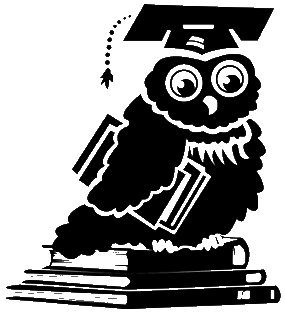Every fall, before diving into our enriching curriculum, the staff at Owl Hill Learning Academy dedicates the first few weeks to building a strong foundation for learning. Our goal is to create a safe and supportive environment in which our preschoolers will thrive as they learn, play, and explore.
Let’s Get Ready to Learn
Setting the stage for an ideal learning environment takes purposeful intention. To that end, the beginning of every school year is focused on safety, respect, and responsibility.
- Safety – Preschoolers are naturally curious which can often lead to accidents or injury. Keeping them and their fellow classmates safe is crucial to their well-being and development. Examples of how we teach safety:
- Use walking feet
- Keep my body calm and themself
- Wash their hands
- Stay with the class when walking from classroom to recess and lunch
- Respect – Teaching respect means showing our students how to treat others, themselves, and the world around them with consideration and kindness. We guide them to:
- Listen attentively to teacher directions
- Raise their hand to speak
- Wait their turn
- Share with their friends
- Responsibility – We want our children to learn that they belong to a community here at OHLA and that their actions have consequences. We help them cultivate skills that will serve them for years to come with expectations such as:
- Putting belongings in their cubby
- Quickly joining the meeting and transitioning in a timely manner
- Cleaning up their things
- Helping to clean up equipment, materials, toys when it is clean up time
- Using inside voices
- Solving small problems on their own
- Asking an adult for help to solve a big problem
Promoting Positive Classroom Behavior
With safety, respect, and responsibility at the top of our priority list, how do we build behaviors that support those priorities? Owl Hill Learning Academy uses a framework for supporting positive behavior in the school setting called PBIS—Positive Behavioral Interventions and Supports. PBIS provides a dedicated model called the Pyramid Model, that is used within our early education classrooms. The Pyramid Model is a guide for promoting positive behaviors, preventing negative ones, and using the best intervention practices when students need help meeting expectations.
The staff at OHLA implement PBIS by:
- Establishing expectations: Clearly define classroom and school-wide rules and behaviors. Model and practice these in the classroom
- Teaching expectations: Use real-world examples to teach students what’s expected
- Recognizing positive behaviors: Acknowledge students who follow the rules
- Discouraging negative behaviors: Correct errors and discourage inappropriate behaviors using positive language
Making data-informed decisions: Use data to evaluate outcomes and guide decision making. Teachers use BIR (behavioral incident reports) to document behaviors.
Setting the Stage for Pre-School Success
At OHLA, you’ll experience how teachers and parents work together to implement strategies and plans for children to be successful in their environment. Join us as we set the stage for an exceptional learning experience for your child(ren)!


